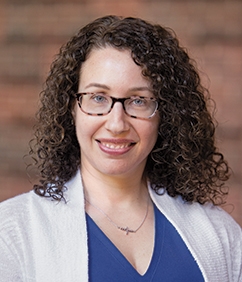Trio of conferences explores the impact of Big Data and artificial intelligence on law and the legal system
How is Big Data changing the law? When NYU Law hosted three conferences on law and technology in a single month this fall, panelists tackled a broad spectrum of topics involving the digital economy, but one constant theme was that technological and business innovation presents new challenges in intellectual property, antitrust, and regulatory law, among other areas.
“Data Law in a Global Digital Economy,” sponsored by the Guarini Institute for Global Legal Studies and Institute for International Law and Justice (IILJ) in cooperation with NYU Law Review, focused on how law affects data ownership, concentration, and control. “Trade Secrets and Algorithmic Systems,” sponsored by the Engelberg Center on Innovation Law and Policy and the Information Law Institute(ILI), explored trade secrecy protection of data-driven decision-making algorithms. “Artificial Intelligence in a Democratic Society under the Rule of Law,” hosted by the Center on Civil Justice, assessed how existing legal and ethical concepts are prepared to meet the challenge of the AI revolution.
Watch video from “Trade Secrets and Algorithmic Systems” here:
At the Guarini Institute/IILJ conference, a freewheeling discussion on data and property law touched on the changing role of trade secrecy. “When I started teaching trade secrets here as a standalone course a few years ago,” said Professor Jeanne Fromer, “I kind of would carve out to the students that the software sector, that whole sector, was less relevant in the trade secrets space because that’s material that wouldn't be protected under the requirements of trade secrets.”
No longer, she said. The growing significance of data collection and of cloud computing, which allows companies to keep software hidden from competitors have made trade secrecy an attractive option for protecting innovation, Fromer said. “[Trade secrecy has] become increasingly important in this space in addition to or in substitution to other forms of intellectual property.” She warned that this shift could limit competition and ultimately harm innovation throughout the software sector.
Yet when it comes to guarding an individual’s health care data, trade secrecy and other intellectual property protections may be inadequate, argued another participant on the same panel, Jorge Contreras, a professor at the University of Utah College of Law. Health care data doesn’t meet the legal test for trade secrecy, he said. “Is this health information about yourself really a secret?” asked Contreras, pointing out that doctors, family members, or even acquaintances may know details of a person’s medical condition. “Sometimes you may not even know it, right? You may not know what your temperature was, or you may not know your diagnosis at any great level of detail until your physician tells you about it,” he said.
Professor Jason Schultz, who is director of NYU Law's Technology Law & Policy Clinic and co-director of the Engelberg Center, pointed to other limits in trade secrecy protections in the opening session of the Engelberg/ILI conference. He described a recent employment case in federal district court in the Southern District of Texas: The union for Houston’s public school teachers sued the school district over performance evaluation software, calling the resulting evaluations arbitrary and capricious. When the plaintiffs sought access to the code at issue, the software maker, SAS, refused on trade secrecy grounds. But the union successfully argued that SAS’s refusal violated the teachers’ right to due process.
“[The] magistrate decision out of Texas really framed this as trade secrets versus the 14th Amendment,” Schultz said. “…So the judge basically said, ‘So what I have to do is, since I'm not going to disclose the trade secrets, I'm not going to force that out in the open. What I'm going do is, I'm going to say that the policy using this proprietary software is unconstitutional.’” The case settled soon afterward.
Schultz said that the union’s strategy offers a blueprint for other litigation challenging the “black box” of increasingly powerful decision-making algorithms: “The restrictions put in place by the protective order because of the trade secrecy ended up in some sense supporting the win for the plaintiff's here,” Schultz said, “and I think that's a strategy that we see over and over again in these kind of cases, and one that I think can be employed to force this issue more out into the open.”
Posted January 25, 2019



